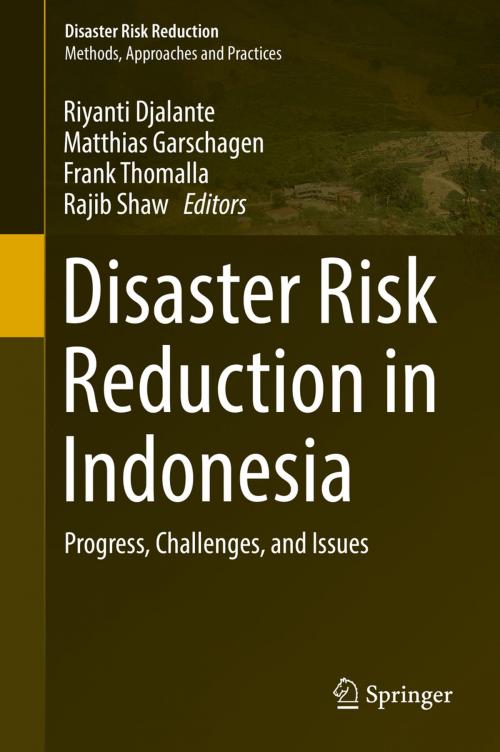Disaster Risk Reduction in Indonesia
Progress, Challenges, and Issues
Nonfiction, Social & Cultural Studies, Political Science, Politics, City Planning & Urban Development, Science & Nature, Science, Biological Sciences, Environmental Science, Nature| Author: | ISBN: | 9783319544663 | |
| Publisher: | Springer International Publishing | Publication: | May 2, 2017 |
| Imprint: | Springer | Language: | English |
| Author: | |
| ISBN: | 9783319544663 |
| Publisher: | Springer International Publishing |
| Publication: | May 2, 2017 |
| Imprint: | Springer |
| Language: | English |
This book is a unique, transdisciplinary summary of the state of the art of disaster risk reduction (DRR) in Indonesia. It provides a comprehensive overview of disaster risk governance across all levels and multiple actors including diverse perspectives from practitioners and researchers on the challenges and progress of DRR in Indonesia. The book includes novel and emerging topics such as the role of culture, religion, psychology and the media in DRR. It is essential reading for students, researchers, and policy makers seeking to understand the nature and variety of environmental hazards and risk patterns affecting Indonesia.
Following the introduction, the book has four main parts of key discussions. Part I presents disaster risk governance from national to local level and its integration into development sectors, Part II focuses on the roles of different actors for DRR, Part III discusses emerging issues in DRR research and practice, and Part IV puts forward variety of methods and studies to measure hazards, risks and community resilience.
This book is a unique, transdisciplinary summary of the state of the art of disaster risk reduction (DRR) in Indonesia. It provides a comprehensive overview of disaster risk governance across all levels and multiple actors including diverse perspectives from practitioners and researchers on the challenges and progress of DRR in Indonesia. The book includes novel and emerging topics such as the role of culture, religion, psychology and the media in DRR. It is essential reading for students, researchers, and policy makers seeking to understand the nature and variety of environmental hazards and risk patterns affecting Indonesia.
Following the introduction, the book has four main parts of key discussions. Part I presents disaster risk governance from national to local level and its integration into development sectors, Part II focuses on the roles of different actors for DRR, Part III discusses emerging issues in DRR research and practice, and Part IV puts forward variety of methods and studies to measure hazards, risks and community resilience.















